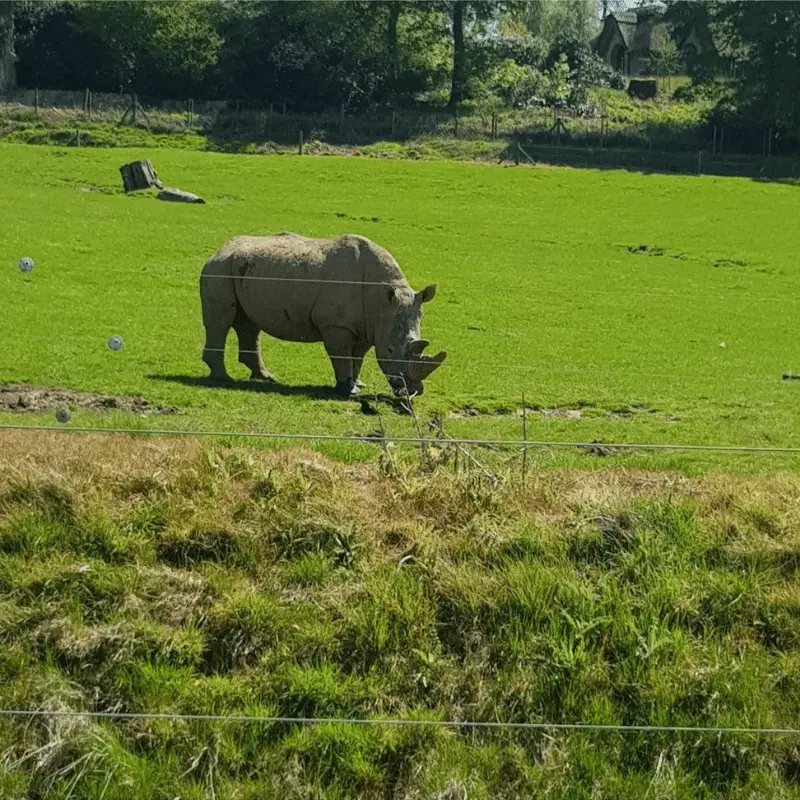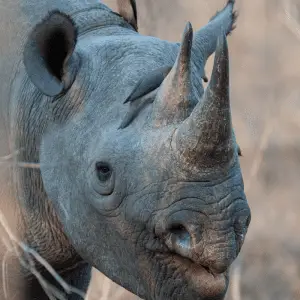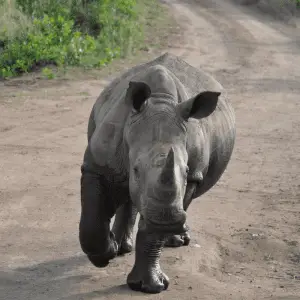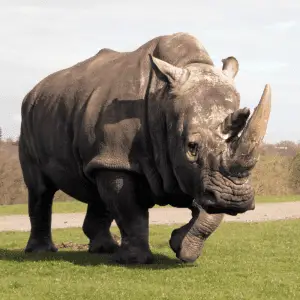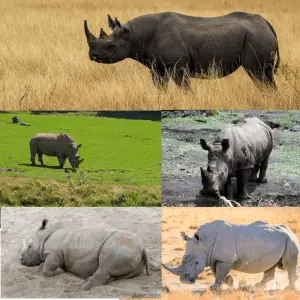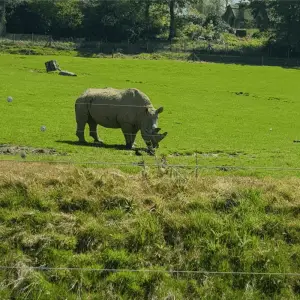Female rhinos usually reproduce only every two and a half years. This is because their pregnancies last for a long time, about 15 to 16 months.
Female rhinoceros usually have one baby, but sometimes they have twins. Sometimes the twin babies don’t survive. The baby rhinos are called calves, and they weigh around 88 to 140 pounds when born. When the calf is between two and four years old, it can live independently from its mother.
Rhino Lifespan
Like most large land mammals, the rhinoceros also have a longer life span than hippos and elephants.
In most cases, rhinos can live up to 50 years of age.
Unlike elephants, who love to live in a herd, rhinos do not. They mostly lead solitary life.
Birth
When baby rhinos are born, they have hair all over their body. Hair on them helps the calves stay warm at night and prevents the baby rhino from being sunburnt.
Even though they’re fragile when they’re born, a baby rhino can stand up and walk only a few minutes after birth.
At first, baby rhinos depend entirely on their mother. It is the mother rhino that helps the baby to navigate until it becomes independent.
Male rhinoceros break away from their mother at about two years, whereas female babies break away from their mothers at about four years old. After this time, the baby rhinos live a solitary and individual life.
Rhinos are territorial animals. The babies need to be strong enough to form their territory and protect it. Male rhino babies become more prominent and stronger quickly than their female counterparts. That is why female rhino babies stay with their mothers more often than male ones.
Growth of the Babies
Only a couple of days after their birth can rhino babies maintain the roaming pace of their mothers. Within the first few hours of their life, the baby rhinos start to suckle milk from their mother.
The baby rhinoceros generally stay dependent on their mothers’ milk until they are 18 months old. However, they are not exclusively dependent on the milk of their mother.
The rhino mothers only allow their babies to suckle exclusively for the first two weeks. After that, she will take her baby to some soft grass and teach the calf how to eat and thrive on juicy vegetation.
The rhino babies do not have any horns at birth. The only protection it has comes from its mother.
Mothers are very caring and attentive to every need of their babies. It is an exceptional characteristic feature of rhino mothers because rhinoceros are generally solitary animals.
Establishing Own Territory
Establishing their territory is not an easy task for most rhino babies. After choosing and marking their territory, the rhino babies chase away other dominant rhinos who want to encroach upon their space. That is why the rhino babies need to be strong enough to hold their ground with the older and stronger adults.
Rhinos Mating Behaviour
The female rhinoceros start to mate with dominant males when they are about four years old. On the other hand, the male rhinoceros reaches sexual maturity when they are about seven years of age.
Once the mating process is completed, the female and male rhinos will go their separate ways. Unlike many other mammals, the rhinoceros couple does not have much to do with each other once the mating process is over.
The male rhinoceros will try to mate with as many females as possible. However, they try not to get involved with female rhinoceros that have babies already to look after.
The female rhinos are not interested in mating with the male ones while caring for their babies. However, in some cases, aggressive male rhinos will try to mate with female rhinos. In most cases, the aggressive male rhinoceros openly try to get rid of the baby rhino so that he can mate with the female. But this often results in violence.
That is why many rhino babies get killed by the aggressive, dominant male rhinoceros in the wild. However, female rhinoceros are highly protective of their babies and will do all they can to protect them and keep them safe.

